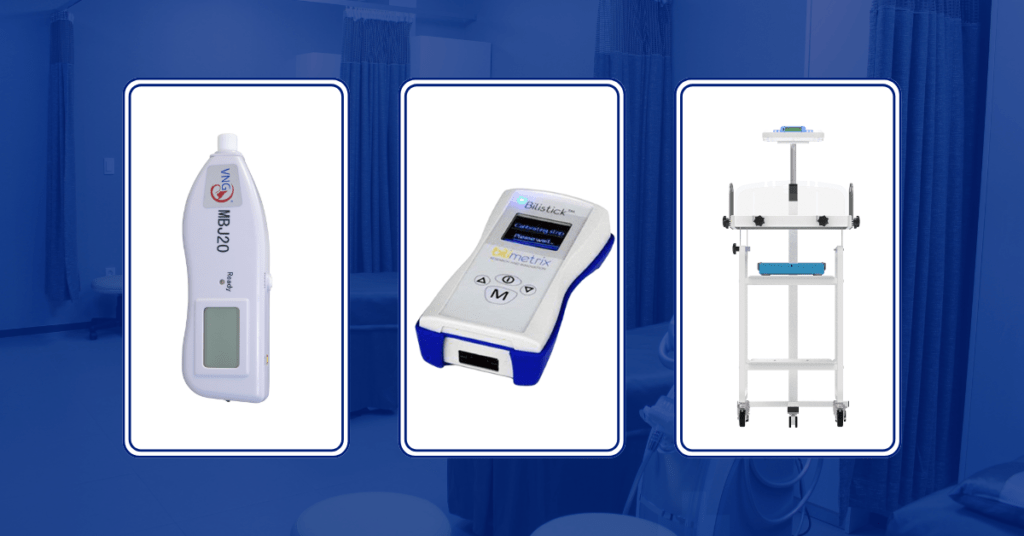INTRODUCTION
New-born jaundice, a condition characterized by yellowing of the skin and eyes, is a common occurrence in new-born babies. It is caused by the build-up of bilirubin, a yellow pigment produced by the breakdown of red blood cells, in the baby’s blood. While mild cases of jaundice often resolve on their own, severe cases can lead to brain damage or death if left untreated. Fortunately, advances in technology and treatment have made it easier to combat this condition and improve outcomes for affected babies.
Traditionally Sunbathing was used as a form of phototherapy for new-born jaundice, which had various disadvantages like –
Uneven distribution of UV radiation: Sunlight contains a mix of UV radiation types, including UVA and UVB. The distribution of these types of radiation can vary depending on factors such as time of day, cloud cover, and geographical location. This can make it difficult to ensure consistent and controlled exposure during sunbathing.
Difficult to regulate dosage: Unlike medical-grade phototherapy devices, it can be difficult to regulate the dosage of UV radiation during sunbathing. This can lead to overexposure or underexposure, potentially reducing the effectiveness of treatment or potentially reducing the effectiveness of treatment or increasing the risk of harm.
One of the most significant advances in the treatment of new-born jaundice is the development of phototherapy. Phototherapy involves exposing the baby to blue or white light, which helps break down bilirubin and allows it to be excreted more easily. Traditional phototherapy involved the use of fluorescent light bulbs, which emitted a broad spectrum of light that included both beneficial and harmful wavelengths. However, in recent years, there have been significant advances in the development of LED lights, which emit only the beneficial wavelengths of light and are more energy-efficient and longer-lasting than traditional bulbs.
The ultraviolet (UV) light used in phototherapy for new-born jaundice typically falls within the range of 420 to 480 nanometres (nm) in wavelength. This is referred to as “blue” or “blue-green” light, as it appears blue or green to the human eye. BILISMART+ LED PHOTOTHERAPY by VNG has a peak wavelength which lies in the range of 450-465nm and it uses special 12 High-Intensity Blue Led Lamps with an intensity of 40 UW/cm2/nm with a lifetime of 45000 hours. It is convenient, inexpensive, and compact as compared to Blood Transfusion and has immediate initiation of detoxification. Bilirubin levels fall upon the production of its configurational and structural photo-isomers. Thus, this eradicates the risk of bilirubin toxicity. It has a tilting head (0-900) and 3 castors (2 lockable). Also, high and low-intensity modes.
Bilismart Double Surface Phototherapy device by VNG provides phototherapy with bright super flux LED-based unit and 15 brights LED lamps specially made for phototherapy treatment. LED PT delivers blue light with a peak intensity at 455 nm. Thus, there is no unwanted UV and IR radiation on the baby. The light intensity is constant for 20,000 hours—ensuring that the treatment of jaundice is effective.
VNG also offers Bilismart under surface phototherapy which is a non-invasive contraption device. It helps to treat neonatal jaundice by eliminating the levels of bilirubin in the infant’s blood. Thus, it uses a process called photo-oxidation. It uses special 12 High-Intensity Blue Led lamps. With an intensity of 40uw/cm2/nm with and a lifetime of 45000 hours. The peak wavelength of the device lies in the range of 40-45 nm. It has maximum power consumption of 35W.
LED phototherapy has several advantages over traditional phototherapy. For one, it is more effective at reducing bilirubin levels, which means that babies can spend less time under the lights. LED phototherapy also produces less heat, which reduces the risk of dehydration and other complications. Finally, LED phototherapy is more cost-effective in the long run, since LED bulbs last longer and use less energy than traditional bulbs.
Another innovation in the treatment of new-born jaundice is the development of bilirubinometers. Bilirubinometers are devices that measure the level of bilirubin in a baby’s blood using a non-invasive method. Traditional bilirubinometers involved drawing blood from the baby and sending it to a laboratory for analysis. However, in recent years, there have been significant advances in the development of non-invasive bilirubinometers, which can be used to measure bilirubin levels through the skin.
VNG Medical Innovation System offers Transcutaneous – Jaundice Detector (MBJ20), transcutaneous MBJ20 Jaundice Detector helps to detect Neonate jaundice, also used for the dynamic clinical examination. When the detector is placed on the neonatal skin, it determines the transcutaneous concentration of bilirubin correlative with serum bilirubin concentration. Thus, it prevents the neonates from any discomfort, and that is associated with the abstraction of blood samples. Besides, it also reduces costs as test results are immediate and hence increases the working efficiency of doctors and nurses.
One example of a minimally invasive bilirubinometer is the Bilistick. The Bilistick is a disposable device that uses a small amount of blood obtained through a heel stick to measure bilirubin levels. The blood sample is applied to a test strip, and the strip is inserted into the Bilistick device, which measures the level of bilirubin in the blood and displays the results on a screen. Bilistick is a convenient and non-invasive tool that can help healthcare providers quickly and accurately diagnose new-born jaundice. By comparing Bilistick® bilirubin results with classic methodologies routinely used in high-quality laboratories of hospitals, it has been demonstrated an excellent correlation of bilirubin results. Therefore, several studies support the use of the Bilistick® System for routine Total Serum Bilirubin screening.
Early detection of jaundice is critical to preventing serious complications. Traditionally, jaundice was detected through a visual exam, in which a healthcare provider would examine the baby’s skin and eyes for signs of yellowing. However, visual exams can be subjective and may not always detect jaundice in its early stages. In recent years, there have been significant advances in the development of non-invasive bilirubin screening tests that can be performed in a doctor’s office



